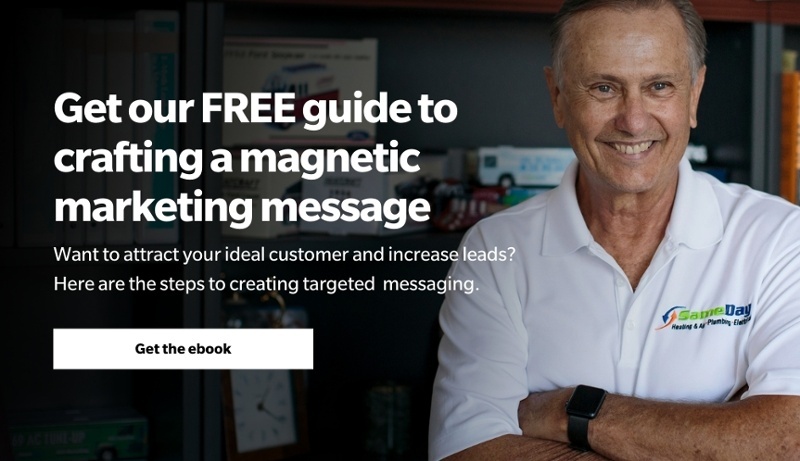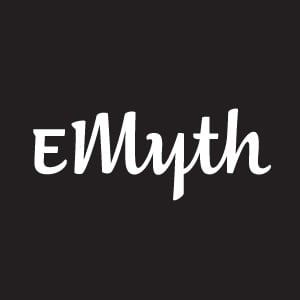Marketing is an art. And if you want your small business to be successful, understanding that art (or having people on your team who do) is an absolute must. People can’t turn into customers until they know who your company is, why they need your products or services, and what sets your business apart.
That’s where demand generation and lead generation come in. You may hear these terms and ask yourself, “Why do I need both demand generation and lead generation? Isn't one enough?” Well, no—both are vital for companies that want to grow their business.
But how do these concepts differ, and how do you know when it’s appropriate to use one or the other?
What is demand generation?
Demand generation (commonly shortened to demand gen) is the process of casting a wide net to create demand for your product or services with the eventual goal of increasing sales and leads. It’s a way to tap into new markets, build excitement and educate people who may have never interacted with your company before.
This marketing strategy follows a journey that will guide your prospects through three main milestones:
- The beginning, when they're just becoming aware that they have a problem you can solve.
- The middle, when their level of trust and confidence in your brand begins to increase.
- The end, when they've developed a definite interest in what your solutions can do for them.
This is called a buyer funnel or buyer flywheel. Every business needs one if they want to take full advantage of both demand and lead gen tactics and strategies.
Blogging is one of the most commonly used demand gen tools. When people have questions about a product, service or topic, they often turn to the internet. Blogging gives you the opportunity to share your expertise with the world. In turn, your business gets put on the radar of people who could become customers down the road.
Podcasting, social media and email marketing campaigns can also be part of your demand gen strategy. But no matter which platforms and formats you turn to, the goal is to spark interest in your company with smart messaging that shows potential customers what you have to offer while also showing them why they should care.
What is lead generation?
Lead generation (or lead gen) is the process of getting inbound inquiries from prospective customers through a nurturing strategy. Where demand gen focuses on getting your business’s name out there, lead gen is all about nurturing the interest you’ve created to convert visitors into leads.
Like demand generation, lead generation channels can include everything from direct mail to email and social media campaigns. But the main goal is to inspire your prospects to take action.
What's the difference?
Here’s the most basic way to break it down: Demand generation is a long-term strategy designed to put your business on a prospect’s radar. It takes planning and investment, and the payoff doesn’t happen immediately.
Lead generation builds on that awareness and moves people through to the next stage—taking the first step to transition from prospect to customer.
What do those differences look like in practice? Here’s an example: You write a blog post that showcases your expertise in the field, providing guidance related to the services you offer or advice on how the products you make can solve a problem.
The blog post lives on your website, and anyone who stumbles upon it can access that information, whether they searched for certain terms that helped them land on your page or they saw someone share your post on social media.
If they find and read your blog post without ever interacting with your company beyond the few minutes they spend reading, that’s demand gen.
If you include a link in your blog to some piece of gated content—something readers can only get to after filling out a form with their contact information—you’ve now moved from generating demand to generating contacts.
You’re not just trying to get as many eyes as possible on your content. You’re trying to capture the information of people who’ve shown enough interest to add their email address to your database.
From there, you can start narrowing down contacts into prospects, also known as sales or marketing qualified leads.
Not everyone who reads your blog post will be right for your products or services. But when you can identify ideal prospects, you’ll know where to focus your more personalized marketing efforts.
This will save resources and keep you from annoying people who never had an interest in becoming a customer.
Why do you need both?
Relying on demand gen alone means relying on prospects to inspire themselves to make the transition from reader to customer.
On its own, this strategy will build awareness without feeding that energy to turn it into a sale.
When you pair demand gen with lead gen, you turn the interest created by demand gen strategies into actionable steps that connect you with your ideal customers, making their conversion from passive readers into active buyers easier.
What are some demand gen channels and tools for small businesses?
If you're trying to implement a demand generation strategy, here are some channels and tools you can use.
Public Relations
A PR strategy can:
- Help generate buzz and excitement for your product or service
- Build brand trust
- Create awareness and generate attention
For many business owners, PR is done by freelancers and/or a PR agency.
Paid Search
Paid Search is an excellent demand generation or lead generation tool.
Search engines are one of the most commonly used ways to search for information. With paid search, you pay a fee to display your products and services at the top of search results - leading to higher clicks and conversions.
This is the perfect demand generation strategy for small businesses that want to spread their message in a cost-effective way to reach the most eyeballs possible.
SEO
Search engine optimization (commonly known as SEO) is the process to rank websites on search engine results pages.
There's an art and a science to ranking pages, which is why many small business owners enlist the help of an SEO specialist, a team of SEO specialists, or an agency to help them in this arena.
Content Marketing
The entire Internet can be thought of as a giant web of content. Your ideal customers are reading, watching videos, or downloading information on an area (or areas) they need help with.
A content marketing strategy can help you increase your credibility, spread your message, and nurture audiences.
Content marketing is usually done by an in-house team, but there are many agencies that can also lend a helping hand.
Email Marketing
Email is an overlooked channel for many businesses and marketers, but it's one that has one of the highest ROI.
According to Oberlo, email can have a 40:1 ROI ($40 of revenue for every $1 spent).
This makes email a prime channel for demand and lead generation.
--
Those are just some of the channels that small businesses use to scale lead and demand gen efforts but figuring out which one to use will be a mixture of your current business model, your current staffing needs, and your future goals.
If you’re not sure how to craft the perfect messaging or determine the right demand gen channels or demand gen tools for your small business, schedule a free session with an EMyth Coach—we’re here to help.





Comments